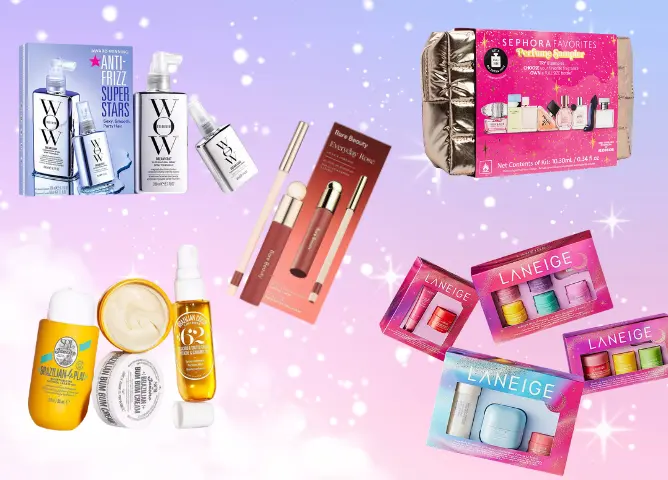In This Article
Skincare is an essential aspect of self-care, allowing us to indulge in small luxuries that refresh and rejuvenate us. Some of the most relaxing moments of our week can be spent on personal skincare, as we cherish the experience of massaging in a beautiful lotion after a bath or feeling the refreshing coolness of a favorite face wash, body wash, or face moisturizer. However, with an increasing number of harmful ingredients found in many skincare and beauty products, it's essential to educate ourselves and make informed choices. In our comprehensive guide we'll reveal why proper skincare is so crucial, divulge the hottest ingredients that will revolutionize your routine, and give you the tools you need to elevate your skincare game to the next level.
The Importance of Skincare
As the human body's first line of defense against the outside world, our skin deserves proper care and attention. Skincare is more than just an aesthetic concern – it's an essential part of our overall health and wellness. By taking the time to tend to our skin, we're not only keeping it radiant and youthful, but we're also safeguarding it from environmental stressors and potential damage. From banishing blemishes to maintaining a supple complexion, an effective skincare routine is key to helping us put our best face forward.
Common Skincare Ingredients
With a plethora of skincare products available on the market, it's essential to understand the ingredients we apply to our skin. Some ingredients to look for in your skincare products are antioxidants (e.g., vitamin C, vitamin E, and green tea extract), humectants (e.g., glycerin and hyaluronic acid), emollients (e.g., ceramides and fatty acids), and exfoliants (e.g., alpha-hydroxy acids and beta-hydroxy acids). However, it's also vital to avoid toxic ingredients that can cause short and long-term health problems, such as cancer, organ damage, and reproductive issues.
Navigating Safer Skincare
To help you make informed choices about your skincare routine, The Campaign for Safe Cosmetics offers a series of quick guides and a detailed search engine on their website to identify and avoid harmful ingredients in skincare products. By understanding the ingredients in your skincare products, you can create a cleaner, healthier routine that benefits both your skin and overall well-being.
Harmful Ingredients to Avoid in Skincare Products
In our quest for healthy, radiant skin, it's crucial to be aware of the potential dangers lurking in some of our favorite products. With a myriad of skincare ingredients on the market, navigating the best choices for our skin can be challenging. In this blog post, we'll delve into 15 harmful skincare ingredients that you should avoid, explain how they can negatively affect your skin and overall health, and identify common products they might be hiding in.
Parabens
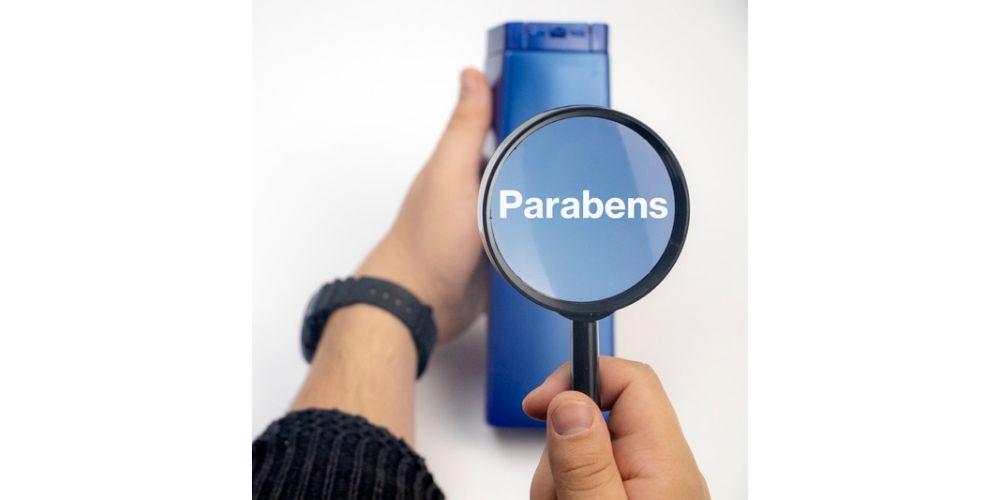
Parabens are a family of widely used preservatives that help extend the shelf life of countless skincare and cosmetic items. But beware! These seemingly innocent ingredients have a darker side, as they can penetrate the skin, potentially disrupting hormones and even triggering skin irritation. . You might be surprised to find these chemicals, known to provoke allergic reactions and skin sensitivities, hiding in cosmetics like skin creams, lotions, foundations, deodorants, shampoos, and conditioners.
Alarmingly, research indicates that these toxic ingredients can accumulate in our bodies over time, potentially forming carcinogens and weakening our immune systems. Don't be duped by labels! Keep an eye out for sneaky variations such as butyl, methyl, or propylparaben, and empower yourself to make informed decisions for a safer, healthier skincare journey.
Thankfully, there are numerous paraben-free options available that can help you maintain an effective skincare routine without compromising your well-being. Paraben-free alternatives like phenoxyethanol, sodium benzoate, and potassium sorbate offer natural and effective preservation options for skincare products. Derived from plant sources, these alternatives are gentle on sensitive skin and environmentally friendly.
By reading labels carefully and choosing products with safer preservatives, you can maintain a nourishing and protective skincare routine. Embrace paraben-free skincare to prioritize your well-being and promote a healthier complexion.
Phthalates
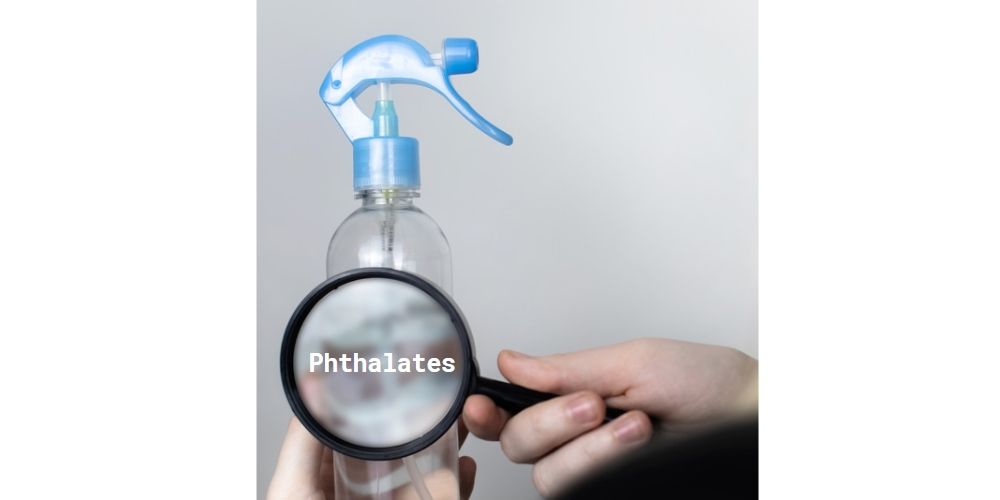
These toxic ingredients often used to enhance and prolong scents in a wide range of skincare products. Watch out for these potential hormone disruptors lurking in color cosmetics, fragranced lotions, and body washes. Don't let phthalates, which are associated with developmental and reproductive toxicity, and even cancer, compromise your skincare routine!
Spot them on labels by looking for acronyms like DEP, DBP, and DEHP, or by steering clear of products that simply list "fragrance" as an ingredient. Stay one step ahead and protect your skin and health from the hidden perils of phthalates!
Opt for products scented with natural essential oils or those labeled as "phthalate-free" to minimize exposure to these harmful chemicals. By choosing fragrance-free options or seeking out brands committed to clean beauty, you'll be protecting your skin and overall health from the hidden dangers of phthalates.
Formaldehyde (& Formaldehyde Releasing Preservatives)
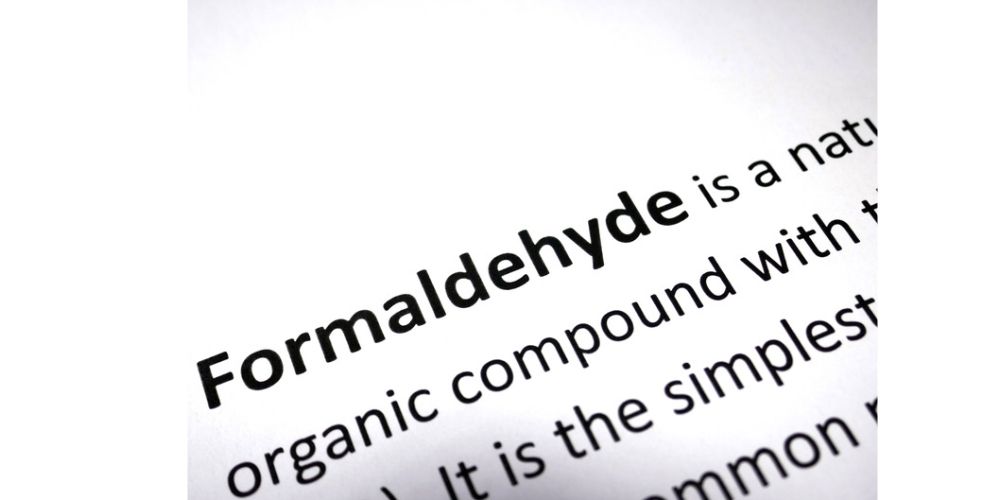
A known carcinogen that can cause skin irritation and respiratory issues. Used as a preservative to extend shelf life, formaldehyde, and its releasing substances can be found in 1 in 5 cosmetic products, including shampoos, soaps, and lotions!
Did you know that the EU requires labeling for products containing more than 0.05% of this harmful chemical, while the US does not? Beware of the health risks, such as skin irritations and allergic reactions, associated with formaldehyde exposure. Join us as we explore this sneaky chemical and learn how to protect yourself and your loved ones from its hidden dangers!
Choose products with natural preservatives like potassium sorbate, sodium benzoate, or ethylhexylglycerin, which offer effective protection without compromising your health. By opting for brands committed to clean and transparent ingredients, you can safeguard your skin and overall well-being from the hazards of formaldehyde.
Sodium Lauryl Sulfate (SLS) and Sodium Laureth Sulfate (SLES)
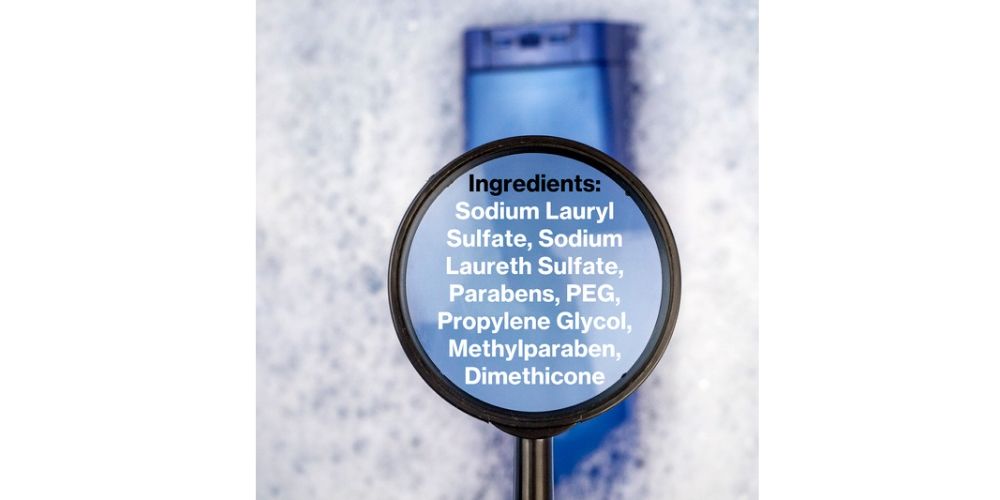
These harsh detergents can cause skin irritation and strip natural oils. From shampo and body wash to toothpaste, these ingredients are known for creating that satisfying, foamy lather. But are they putting your health at risk? While the debate continues on their safety for humans, research indicates that concentrations greater than 1% can cause skin and eye irritation.
You can still indulge in a luxurious lather while protecting your skin and well-being by choosing natural, plant-based surfactants like coco-glucoside, decyl glucoside, or sodium cocoyl isethionate. Make the switch to mild, environmentally friendly ingredients and pamper your skin with the care it deserves!
Synthetic Fragrances
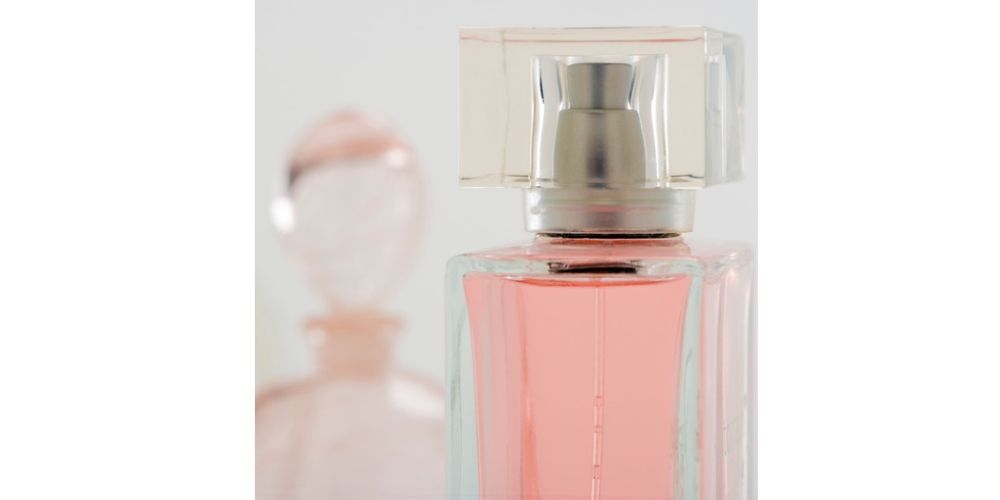
A synthetic fragrance can be found in everything from lotions and cosmetics to candles, may carry hidden risks like triggering allergies, asthma, or skin irritation. While plant-based oils can provide safer alternatives, the cost-effective allure of synthetic fragrances often wins out.
Beware of the unregulated term "essential oils," which can still cause harm. The ingredients within these fragrances may include pollutants and potential carcinogens associated with serious health concerns.
Opt for fragrance-free options or those that utilize pure, natural essential oils from ethical sources. By choosing products that embrace the power of botanical scents, you can indulge in captivating aromas without compromising your health or the environment.
Triclosan
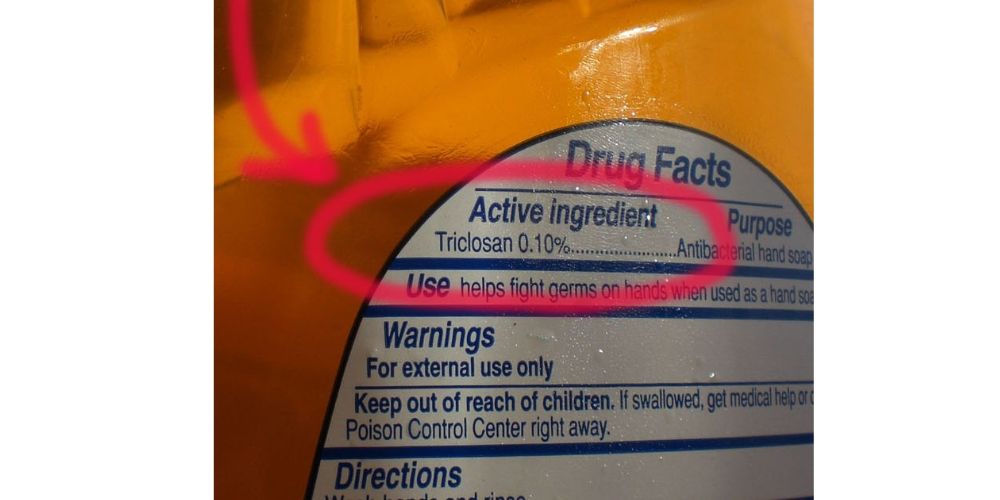
Triclosan, an antibacterial agent found in various skincare products like soaps, toothpaste, and deodorant, has been raising eyebrows for its potential dangers. Despite its initial use in surgical scrubs, studies show that triclosan provides no extra protection against bacteria compared to plain soap.
It has been linked to antimicrobial resistance, hormone disruption, and developmental complications, making it a red flag for expectant and nursing mothers. The consequences extend beyond human health, as triclosan wreaks havoc on aquatic life and can even harm crops. Keep an eye out for triclosan (TSC) and triclocarban (TCC) on labels, and stay informed about the ingredients lurking in your skincare products!
Oxybenzone
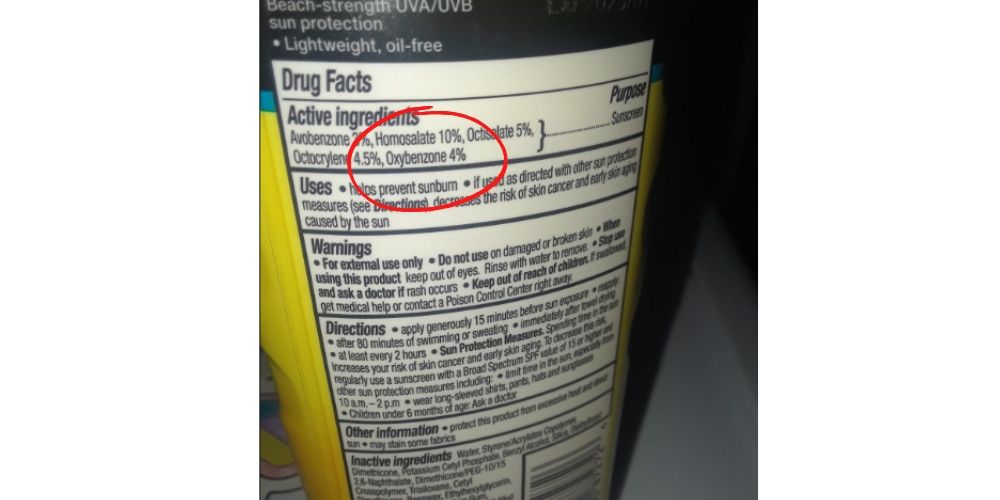
Chemical uv filters ingredient found in sunscreens, makeup, and hair care products, promises protection against harmful UV rays. But, it may not be all sunshine and rainbows. This ingredient has been identified as an endocrine disruptor, meaning it can interfere with your hormones.
Even Hawaii has banned oxybenzone from sunscreens due to its devastating effects on coral reefs. Keep an eye out for sunscreens containing oxybenzone and benzophenone-3, and consider the potential risks before diving headfirst into the world of UV protection.
Avoid these risks by turning to mineral-based sunscreens with zinc oxide or titanium dioxide for safe and effective UV protection. These eco-friendly alternatives shield your skin from the potential hormone imbalances and environmental damage tied to oxybenzone. When you reach for sun protection, choose products with gentle, earth-conscious ingredients and bask in the sun, worry-free.
Hydroquinone
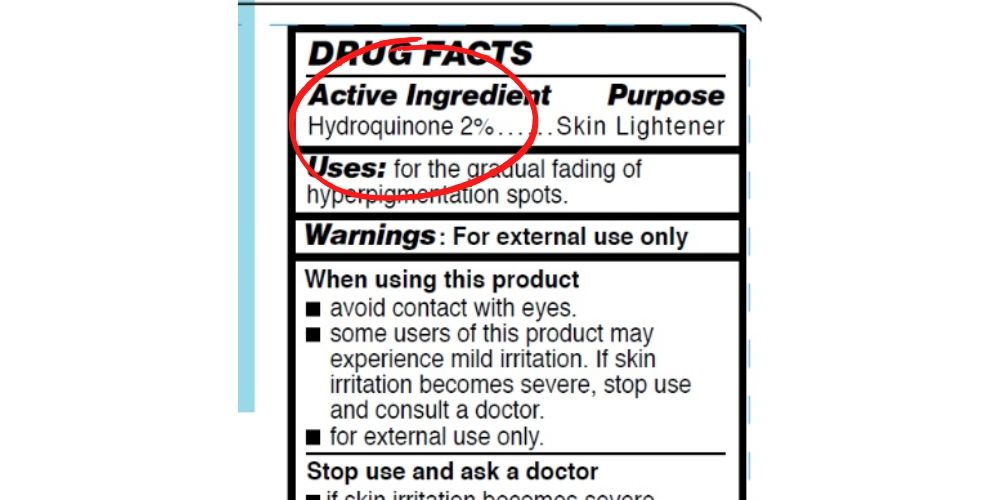
This popular ingredient in skin lightening creams and some acne treatments, may do more harm than good. Though it effectively lightens and brightens the complexion, it's associated with skin irritation, organ toxicity, and even cancer. The risks outweigh the rewards when it comes to hydroquinone.
Glow safely by choosing skin-brightening alternatives like vitamin C, niacinamide, or licorice extract. These natural ingredients deliver radiant results without jeopardizing your health, allowing you to enjoy a luminous, even-toned complexion with peace of mind.
Toluene
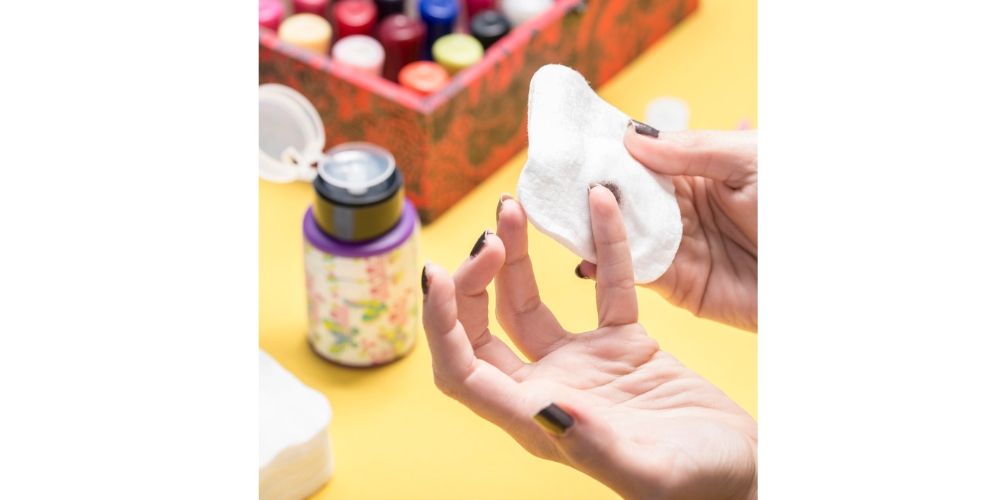
Did you know that toluene, a chemical lurking in nail polish and hair dye, can cause headaches, dizziness, and skin irritation? This volatile petrochemical solvent doesn't just affect your appearance - it can also wreak havoc on your immune system and even lead to birth defects.
Fear not, beauty enthusiasts! There are safer alternatives to toluene. Opt for non-toxic, "5-free" or "7-free" nail polishes, which exclude harmful ingredients like toluene. When it comes to hair dyes, choose ammonia-free or plant-based formulas for a healthier, gentler way to transform your tresses.
Petrolatum
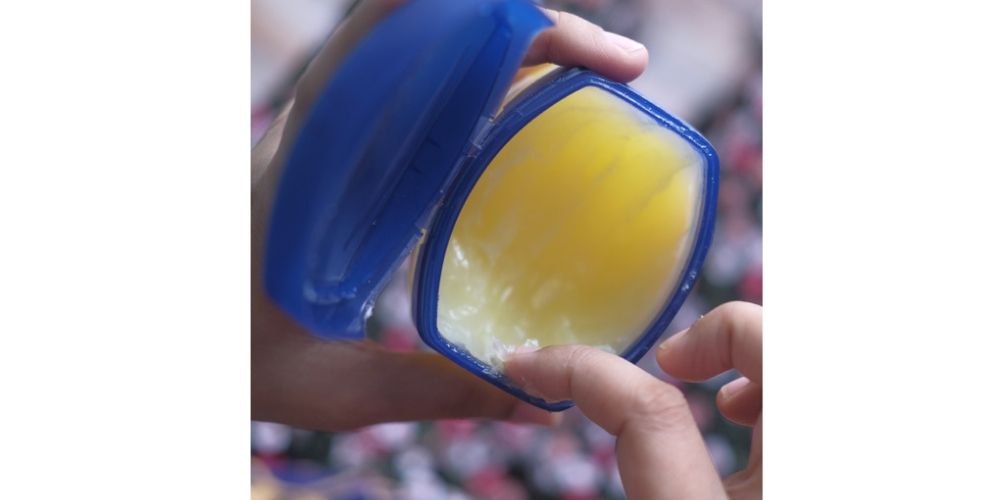
This seemingly harmless ingredient, found in lip balms, moisturizers, and hair products, may not be as safe as you think. Petrolatum, a mineral oil, can harbor cancer-causing impurities, putting your health in jeopardy. Used for its moisture-locking and skin-protecting properties, petrolatum is more common than you might expect.
However, there's no need to worry; safer alternatives such as shea butter, cocoa butter, or jojoba oil provide nourishing hydration without the risk of impurities. Keep an eye out for these plant-based oils and safeguard your health while enjoying the benefits of your favorite products.
Ethanolamines
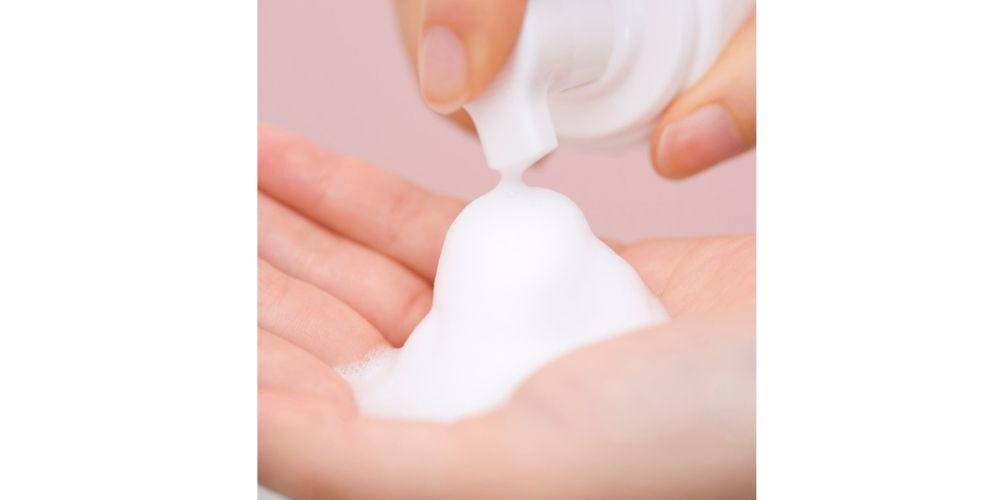
These chemicals, including monoethanolamine (MEA), diethanolamine (DEA), and triethanolamine (TEA), are found in a wide array of cosmetics and skincare products, from moisturizers to baby sunscreen. They function as surfactants, foaming agents, or preservatives, adjusting the pH or adding a fragrance. While the FDA believes there is no cause for alarm, it's essential to note that studies have linked DEA and related ingredients to cancer in lab animals.
California's Environmental Protection Agency classifies DEA as a carcinogen, and the International Agency for Research on Cancer considers it possibly carcinogenic to humans. So, before you lather up, check the label for ingredients like Cocamide DEA, DEA-Cetyl Phosphate, DEA Oleth-3 Phosphate, Lauramide DEA, Myristamide DEA, Oleamide DEA, TEA-Lauryl Sulfate, and Triethanolamine. Protect your health by staying informed and making safe choices.
Coal Tar
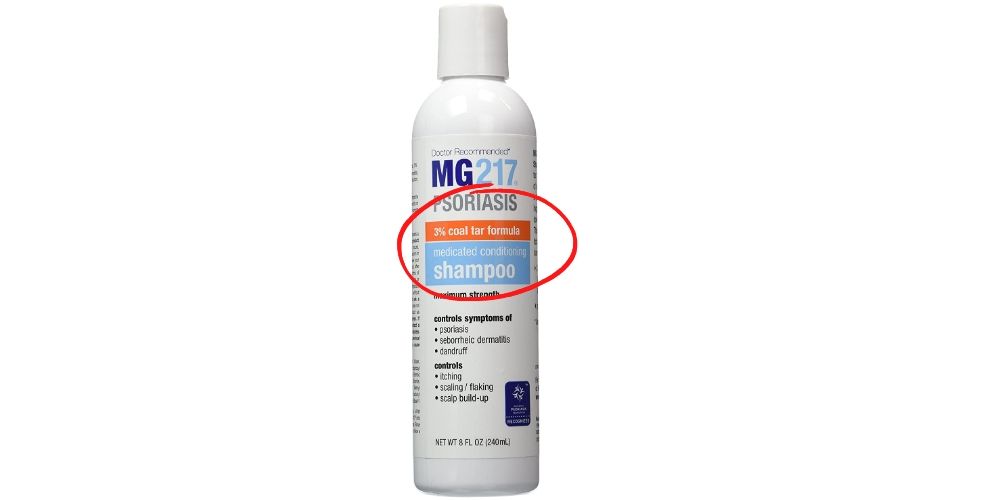
Derived from burning coal, this controversial ingredient is found in products like dandruff shampoos, hair dyes, and even makeup. Although the FDA permits concentrations of 0.5% to 5%, coal tar's potential dangers have raised eyebrows.
From reducing itchiness and scaling to achieving darker hair color, coal tar has its uses. However, it's classified as a Group 1 carcinogen, and some of its compounds are linked to skin cancer, neurological damage, and eye cancer. While human studies haven't established a strong link to cancer, its presence in hair dyes may cause blood and bladder cancer.
Keep an eye out for names like coal tar solution, estar, naphtha, benzin B70, and P-phenylenediamine on the label, often preceded by FD&C and D&C.
1,4-Dioxane
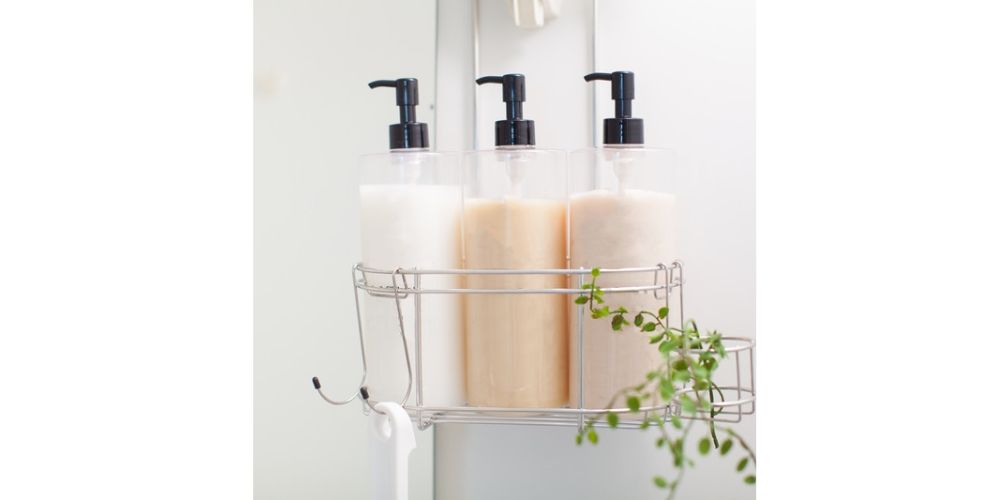
This potential carcinogen and skin irritant is often found in items that create suds, like shampoos, body washes, and liquid soaps, as well as toothpaste, hair dye, and deodorant. Interestingly, 1,4-dioxane isn't intentionally used in cosmetics but rather forms as a byproduct during the manufacturing process when common ingredients are combined.
While 1,4-dioxane hasn't been tested on humans, the NTP and EPA have classified it as a likely human carcinogen based on studies in experimental animals. The EWG also rates it as a known human respiratory toxicant, harmful even in small doses.
Keep a watchful eye on product labels for ingredients such as Sodium Laureth Sulfate, PEG compounds, and chemicals ending in "eth," which may indicate the presence of 1,4-dioxane. By staying informed, you can make healthier choices for your personal care routine.
Siloxanes
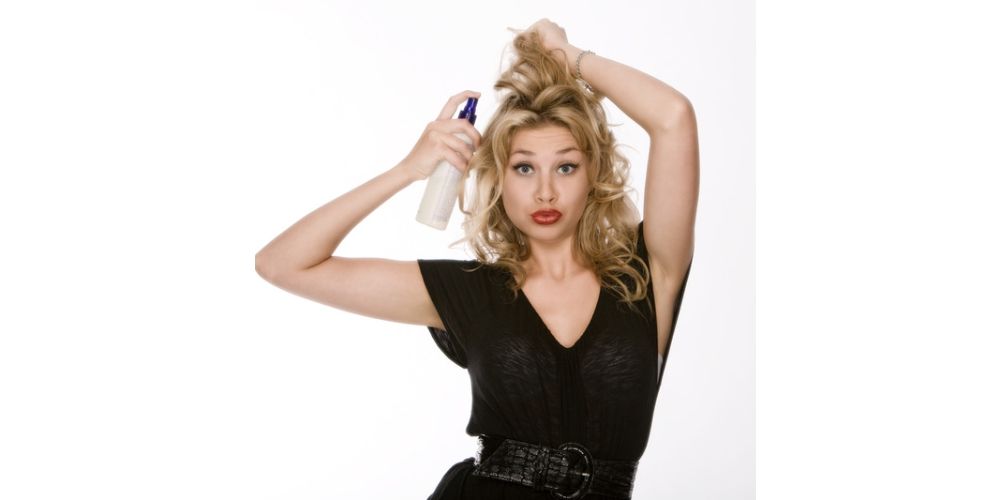
Derived from silicone, siloxanes are often found in hair care products, deodorants, and makeup. They provide a silky smooth feeling and allow products to glide more easily. However, these seemingly beneficial properties come at a cost.
At high doses, they have been linked to immune system harm and uterine tumors, which is especially concerning for sexual health products. Furthermore, some siloxanes have been shown to persist and accumulate in aquatic organisms, negatively impacting biodiversity.
When checking the product labels, be cautious of silicone and ingredients ending in -siloxane, -ethicone, or -silane. By making informed choices, you can help protect your health and the environment.
Talc
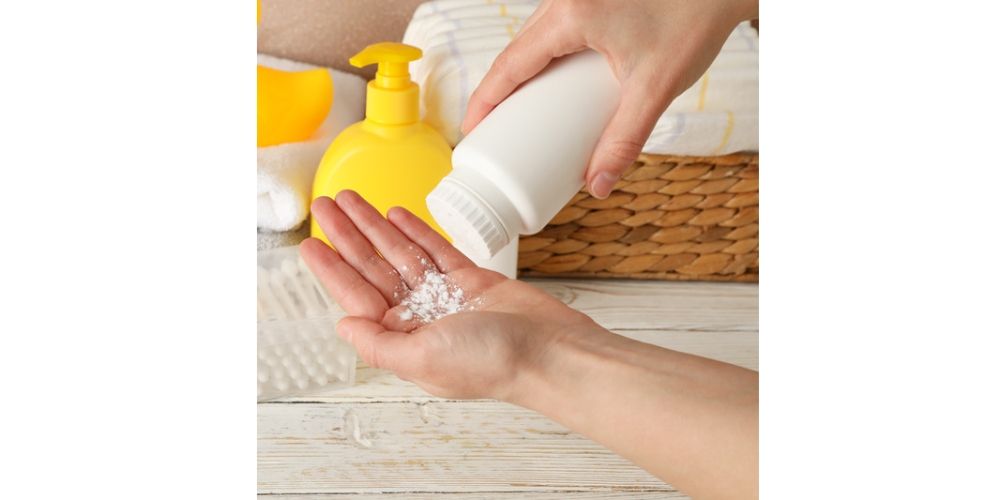
Talc, a natural mineral, has come under scrutiny for its potential contamination with asbestos, a known carcinogen. Despite its widespread use in baby powder, makeup, and some deodorants, the risks associated with talc have led many to reconsider its safety. Talc is primarily used for its absorbent and anti-caking properties, helping to control moisture, reduce friction, and improve the texture of products.
However, the primary concern with talc is its potential contamination with asbestos, a hazardous substance linked to lung cancer and mesothelioma, which occurs naturally near talc deposits and can lead to cross-contamination during the mining process.
For those seeking safer alternatives, consider products containing cornstarch, arrowroot powder, or kaolin clay. These natural ingredients offer similar benefits without the potential risks associated with talc. By staying informed and choosing talc-free products, you can protect your health and enjoy peace of mind. Making mindful choices about the ingredients in your personal care products not only benefits you but also helps promote a healthier environment for everyone.
Final Thoughts
By steering clear of these harmful ingredients, you'll be well on your way to cultivating a cleaner, healthier skincare routine that benefits both your skin and overall well-being. Make a habit of reading labels diligently and utilize resources like The Campaign for Safe Cosmetics to stay informed. Consumer concerns have already led to countries and states like California banning specific toxins in personal care products through initiatives like the Toxic Free Cosmetics Act.
This underscores the importance of being aware of unhealthy products and ingredients so that we can play an active role in eliminating them. It starts with supporting organic makeup brands and opting for healthier alternatives, such as organic face moisturizers. We hope this article helps to clarify more than just your skin.
If you have a friend who might also be wondering about which ingredients to avoid in skincare, feel free to share this article with them, so we can all work together towards a toxin-free beauty regimen.
Other Posts You May Like
Looking to elevate your beauty collection with some must-have products? Check out our top picks below and find the best beauty products that deserve a spot in your collection!
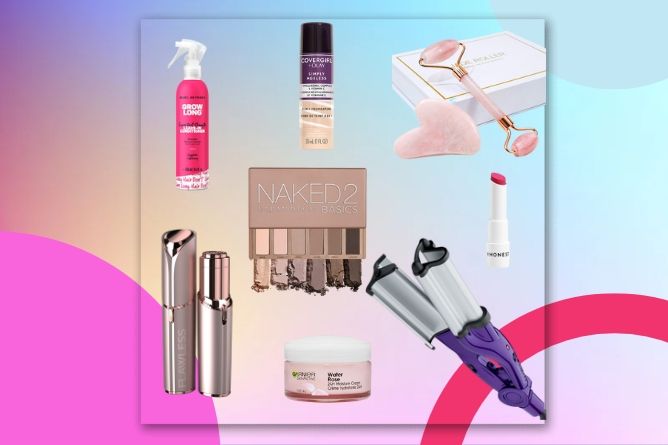
References
Agency for Toxic Substances and Disease Registry. (2015). ToxFAQs™ for Formaldehyde. Retrieved October 11, 2022, from https://wwwn.cdc.gov/TSP/ToxFAQs/ToxFAQsDetails.aspx?faqid=219&toxid=39
Coggon, D., Harris, E. C., Poole, J., & Palmer, K. T. (2003). Extended follow-up of a cohort of British chemical workers exposed to formaldehyde. J Natl Cancer Inst, 95, 1608–1615.
Hauptmann M, Lubin JH, Stewart PA, Hayes RB, Blair A. Mortality from lymphohematopoietic malignancies among workers in formaldehyde industries. J Natl Cancer Inst. 2003;95:1615–1623.
Hauptmann M, Lubin JH, Stewart PA, Hayes RB, Blair A. Mortality from solid cancers among workers in formaldehyde industries. Am J Epidemiol. 2004;159:1117–1130.
Hauptmann M, Stewart PA, Lubin JH, et al. Mortality from lymphohematopoietic malignancies and brain cancer among embalmers exposed to formaldehyde. J Natl Cancer Inst. 2009;101:1696-708.
International Agency for Research on Cancer. (2012). IARC Monographs on the Evaluation of Carcinogenic Risks to Humans, Volume 100F: Chemical Agents and Related Occupations, Formaldehyde. Retrieved October 11, 2022, from https://publications.iarc.fr/123
Lefebvre MA, Meuling WJ, Engel R, et al. Consumer inhalation exposure to formaldehyde from the use of personal care products/cosmetics. Regul Toxicol Pharmacol. 2012 Jun;63(1):171-176.
Beane Freeman, L., Blair, A., Lubin, J. H., et al. (2009). Mortality from lymphohematopoietic malignancies among workers in formaldehyde industries: the National Cancer Institute cohort. J Natl Cancer Inst, 101, 751–761.
National Cancer Institute. Formaldehyde and Cancer Risk. 2011. Accessed at https://www.cancer.gov/about-cancer/causes-prevention/risk/substances/formaldehyde/formaldehyde-fact-sheet on October 11, 2022.
Occupational Health and Safety Administration. OSHA Fact Sheet: Formaldehyde. 2011. Accessed at https://www.osha.gov/sites/default/files/publications/formaldehyde-factsheet.pdf on October 11, 2022.
Pierce, J. S., Abelmann, A., Spicer, L. J., et al. (2011). Characterization of formaldehyde exposure resulting from the use of four professional hair straightening products. J Occup Environ Hyg, 8(11), 686-99.
Pinkerton LE, Hein MJ, Stayner LT. Mortality among a cohort of garment workers exposed to formaldehyde: An update. Occup Environ Med. 2004;61:193–200.
US Department of Health and Human Services. Public Health Service, National Toxicology Program. (2021). Report on Carcinogens, Fifteenth Edition, Formaldehyde. Retrieved October 11, 2022, from https://ntp.niehs.nih.gov
US Environmental Protection Agency, Office of Air and Radiation. Report to Congress on Indoor Air Quality, Volume II: Assessment and Control of Indoor Air Pollution, 1989.
US Environmental Protection Agency. Formaldehyde. 2022. Accessed at https://www.epa.gov/formaldehyde on October 11, 2022.
Wang M, Cheng G, Balbo S, et al. Clear differences in levels of a formaldehyde-DNA adduct in leukocytes of smokers and nonsmokers. Cancer Res. 2009;69:7170-7174.
Zhang L, Tang X, Rothman N, et al. Occupational exposure to formaldehyde, hematotoxicity, and leukemia-specific chromosome changes in cultured myeloid progenitor cells. Cancer Epidemiol Biomarkers Prev. 2010;19:80-88.






